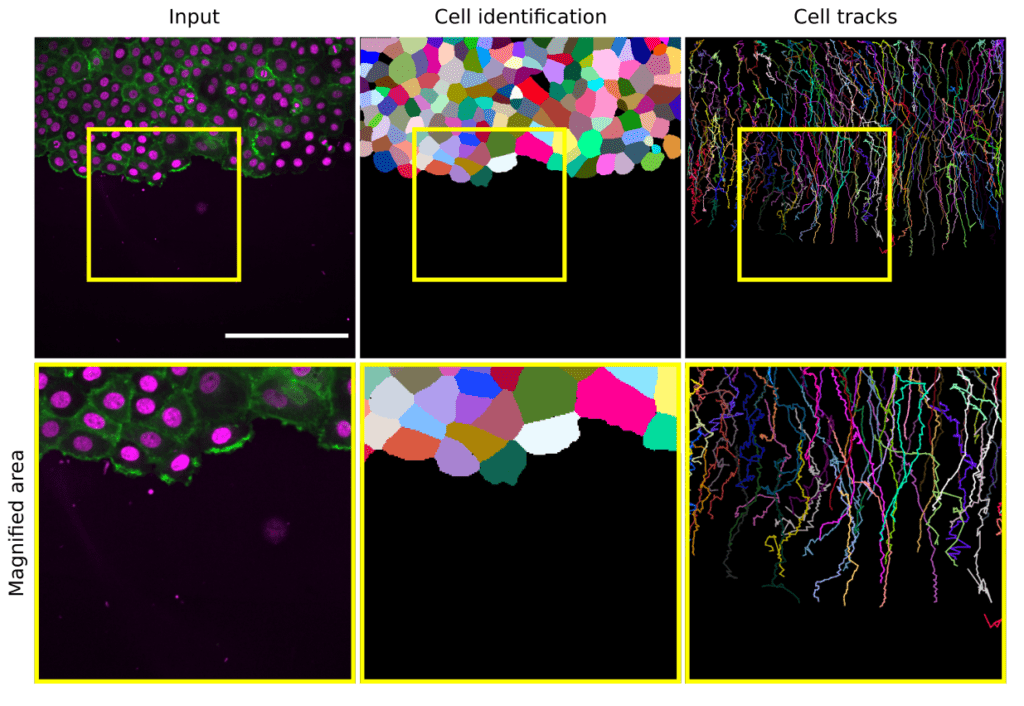Scientists from Akademi University, Turku, Finland, and Pasteur Institute, Paris, France have developed a new software TrackMate v7 that may allow tracking things in photos. The technology, which is based on artificial intelligence, will serve as a catalyst for future discoveries in the biological sciences.
Object tracking, or following objects across time, is a critical image analysis approach for quantifying dynamic processes in biosciences. TrackMate is an automated tracking software used to analyze bioimages and is distributed as a Fiji plugin. The latest TrackMate v7 allows scientists to simply track things in photos. Fiji’s image analysis platform includes TrackMate, which is a free, open-source program.
According to Guillaume Jacquemet, Academy Research Fellow at Åbo Akademi University and one of the researchers involved in TrackMate development, TrackMate enables scientists to solve complicated tracking problems more quickly, boosting discoveries in a variety of domains in life sciences.
Tracking is used in the biological sciences to trace the movement of molecules, subcellular organelles, bacteria, cells, and complete animals, for example. However, no single application can solve all tracking problems because of the wide variety of photos used in research.

Image Source: https://www.abo.fi/en/news/new-ai-solutions-take-on-tracking/
TrackMate v7 includes enhanced visualization and analysis capabilities, as well as automatic and semi-automated tracking techniques. The application uses artificial intelligence and other complex segmentation methods to find items from photos, allowing it to analyze a wide range of images.
Guillaume Jacquemet explains that this new functionality significantly expands the scope of TrackMate’s applications and capabilities. For example, we demonstrate how TrackMate v7 can track moving cancer cells, immune cells, or stem cells. It can also be used to track the progression of bacterial growth.

Image Source: https://www.abo.fi/en/news/new-ai-solutions-take-on-tracking/
The researchers are currently using the software in Jacquemet laboratory to investigate the factors that allow cancer to spread. Now the researchers can produce better and more informative data in a fraction of the time it used to take.
Story Source: https://www.abo.fi/en/news/new-ai-solutions-take-on-tracking/
Ershov, D., Phan, MS., Pylvänäinen, J.W. et al. TrackMate 7: integrating state-of-the-art segmentation algorithms into tracking pipelines. Nat Methods (2022). https://doi.org/10.1038/s41592-022-01507-1
Dr. Tamanna Anwar is a Scientist and Co-founder of the Centre of Bioinformatics Research and Technology (CBIRT). She is a passionate bioinformatics scientist and a visionary entrepreneur. Dr. Tamanna has worked as a Young Scientist at Jawaharlal Nehru University, New Delhi. She has also worked as a Postdoctoral Fellow at the University of Saskatchewan, Canada. She has several scientific research publications in high-impact research journals. Her latest endeavor is the development of a platform that acts as a one-stop solution for all bioinformatics related information as well as developing a bioinformatics news portal to report cutting-edge bioinformatics breakthroughs.











